How to start a Junior Landcare group
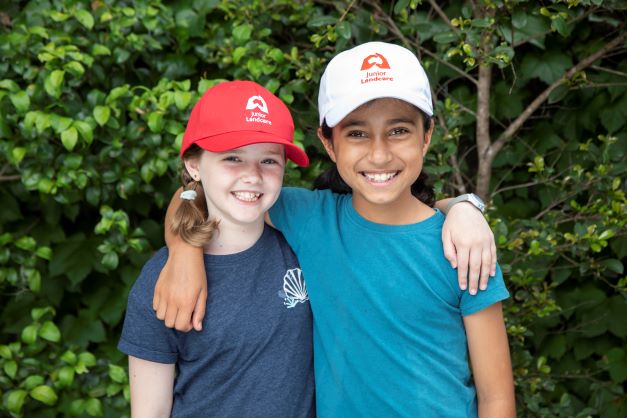


It’s easy to set up a Junior Landcare group in your school or community
A Junior Landcare group is a great way to help guide the next generation of environmental leaders on how they can actively do something to make a difference at a local level to care for the planet.
Junior Landcare is a pathway for children to be involved in landcare – one of Australia’s largest volunteer movements. Through its range of environmental educational resources, Junior Landcare helps children to be:
![]() Aware of environmental issues – particularly around the themes of biodiversity, food production, waste management, and First Nations perspectives.
Aware of environmental issues – particularly around the themes of biodiversity, food production, waste management, and First Nations perspectives.
![]() Empowered to take meaningful action for the environment; and
Empowered to take meaningful action for the environment; and
![]() Active in their local environment and local community.
Active in their local environment and local community.
From monthly excursions to hands-on activities, there are many different ways to encourage continuous participation in landcare, so the children of today become the Landcarers of the future.
This resource is a guideline to help you set up a Junior Landcare group at your school or with a youth group/organisation in your community to help bring children together. You can create activities for your group that best suit your school or community, and your local area. Every Junior Landcare group is different.
If you have already set up or run a Junior Landcare group, we’d love to hear your ideas too – we encourage you to email us at enquiries@landcareaustralia.org.au.
You can also download a copy of this guide here.
What is a Junior Landcare group?
There are many types of Junior Landcare groups – but they all have one thing in common: young people interested in helping to restore, enhance and protect the local natural environment.
Junior Landcare groups include – but are not limited to – early learning centres, out of school care centres, primary schools, secondary schools, home schooling, before- and afterschool care, school of the air, and youth groups including Scouts and Girl Guides and teams of young people interested in caring for the natural environment.
We want young people to feel empowered to make a change and ensure the safe future of the environment.
What do Junior Landcare groups do?
Junior Landcare groups undertake projects to help the local natural environment. What you do is up to you and will reflect the environmental needs of your local area.
Junior Landcarers are involved with a range of projects, such as:
- Planting native trees, shrubs and grasses
- Planting vegetable and herb community gardens
- Propagating seeds
- Weed removal
- Planting Indigenous plant use gardens (bush tucker gardens)
- Fauna surveys
- Planting sensory gardens
- Building frog habitats
- Establishing nest boxes for native animals
- Building native bee and insect hotels
- Caring for wiggly worm farms
- Clean-up activities
- Recycling and waste management activities
- Water surveys and monitoring
- Creating yarning circles
- Collecting food scraps for composting
- Fundraising for local landcare projects
- Exploring native habitat with incursions and excursions
- Working alongside landcare and other community environmental groups.
If you need further ideas or step-by-step support for environmental learning activities to try at your school or in your community, don’t forget to visit the Junior Landcare Learning Centre – an online platform packed with activities developed by environmental educators that come with checklists, activity sheets, explainer videos and more.
How do we become or start a Junior Landcare group?
There is no formal application process to become a Junior Landcare group, but there are some suggested steps to help get you started and to ensure that your group is a success.
STEP 1:
Your group will need a co-ordinator to direct the activities of the group. This person could be a local Landcare coordinator, teacher, community member, parent or senior student. Remember any adult working with children will need a Working with Children Check.
STEP 2:
For schools and/or educators
Research the environmental issues and groups already active in your community.
Speak to your local Landcare group, local council, Traditional Owners and First Nations organisations, or other local environmental community group for information and advice. You can also ask how you can get involved in their projects, such as community planting days – or how they could support you with your own project/s.
For Landcare groups/coordinators:
Contact your local school and/or youth group such as your local Scouts or Girl Guides groups. Find out who is in charge and tell them how you could support them; the different Junior Landcare activities they
could do; and funding opportunities/grants available to support these activities.
STEP 3:
Give your group a name, such as your school’s name + Junior Landcare group (or
something that represents your specific group) e.g. Flowerdale Primary School Junior Landcare Group
STEP 4:
Register your school or youth group on the National Landcare Directory. Landcare Australia will email you a Junior Landcare
logo with your school or group name.
Who can we connect with to support us?
Connecting with different stakeholders in your community is a great way to bring your ideas to life and develop your Junior Landcare group with local support and expertise. You could reach out to:
- Other Junior Landcare schools or youth groups
- Your local Landcare group or other community environmental group
- Traditional Owners and First Nations
organisations - Your local council
- The Natural Resource Management or Catchment Management Agency in your region
- The Junior Landcare Community that lists other environmental NGOs doing great things to help children play an active role in caring for the environment
- Local business to support your projects with in-kind support and/or fundraising activities.
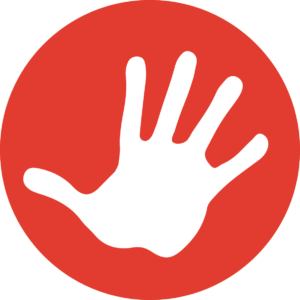 Contact your local Traditional Owners or First Nations organisations and involve them in your Junior Landcare group or projects. It is important to include First Nations perspectives so that children understand local cultural heritage, including local fauna and flora. If you do not have any existing contacts or direct links with First Nations organisations or people in your area, a good starting point is to contact either the Local Aboriginal Land Council (LALC) or Local Aboriginal Education Consultative Group
Contact your local Traditional Owners or First Nations organisations and involve them in your Junior Landcare group or projects. It is important to include First Nations perspectives so that children understand local cultural heritage, including local fauna and flora. If you do not have any existing contacts or direct links with First Nations organisations or people in your area, a good starting point is to contact either the Local Aboriginal Land Council (LALC) or Local Aboriginal Education Consultative Group
We’ve set up a Junior Landcare group, what’s next?
There are lots of different ways to get the most out of your time together and keep Junior Landcarers engaged. Here are a few ideas to get you started:
- Organise fun, hands-on activities with students/children in the community like building an insect hotel, going on a bug hunt, planting a bee/butterfly garden or growing a seasonal veggie patch. Visit the Junior Landcare Learning Centre for ideas and support.
- Don’t make the activities too long – approximately 1-2 hours for primary school aged children and 2-3 hours for secondary school aged students, depending on what you are doing.
- Don’t get too technical. Make sure the information being delivered doesn’t go over children’s heads, but don’t dumb it down either!
- Invite guest speakers from your local landcare or community environmental group. Members of local landcare groups often have special interests and expertise they are happy to share.
- Keep an eye out for small grants. Look out for grants that will help you purchase materials, resources, cover travel costs, etc. to help you start your group and keep it going.
- Share word of your projects with local media and/or on your group or school’s social media page or newsletter. This is a great way to showcase your way and potentially attract support from the community.
- Involve the local community. Consider hosting working bees or inviting community members or parent volunteers if you need extra hands for planting, weeding or site preparation, etc
Case study 1: Junior Landcare groups for all ages
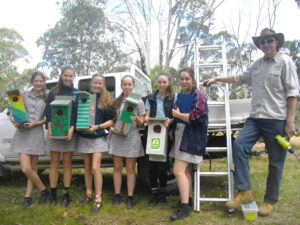 Upper Goulburn Landcare Network’s four Junior Landcare groups highlight the range of ways students can get hands-on taking care of their local environment with the help of their local landcare group and its members.
Upper Goulburn Landcare Network’s four Junior Landcare groups highlight the range of ways students can get hands-on taking care of their local environment with the help of their local landcare group and its members.
For example, the Yea High School Junior Landcare Group focuses on tree planting, weed removal along the rail trail, as well as building and installing nest boxes, with the Year 8 woodwork class making the nest boxes themselves.
Students in the Kinglake West Primary School Junior Landcare Group have been involved in sensory garden design, planting activities and native plant identification; while the Flowerdale Primary School Junior Landcare Group has done school Indigenous garden planting and maintenance and participated in revegetation projects with Flowerdale Landcare Group.
Kinglake Scouts Junior Landcare Group has built and installed nest boxes, and especially enjoys night walks-spotlighting (possum prowls) as one of their activities.
For those wanting to set up a Junior Landcare group of their own, Chris Cobern, Landcare Facilitator & Project Officer at Upper Goulburn Landcare Network, shares: “Yea High School and Kinglake West Primary School both approached me, but it is a good idea for Landcare facilitators to contact their local schools and Scout groups and introduce themselves.”
Case study 2: Engaging activities relevant to the local environment
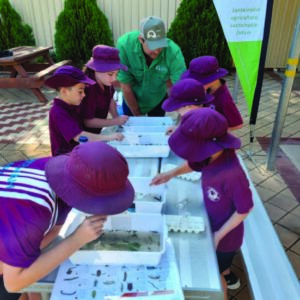 As the Southern Coordinator for Western Landcare NSW, Vanessa Anderson looks after 10 of Western Landcare NSW’s 17 Junior Landcare groups, which now total around 500 members.
As the Southern Coordinator for Western Landcare NSW, Vanessa Anderson looks after 10 of Western Landcare NSW’s 17 Junior Landcare groups, which now total around 500 members.
Together with the Northern and Western Coordinators, Vanessa aims to visit each of the groups once a term to either bring them a new activity or to support them with existing projects.
“The things we do vary depending on the location of the school, age of the students, facilities and resources available,” shares Vanessa. “I try to link activities with the current curriculum, but as most of the Junior Landcare groups are in relatively remote locations this can be challenging.”
To date, some of the activities Vanessa has done with her groups include planting trees for National Tree Day Day; creating bush tucker and bee/butterfly gardens; making insect hotels; water erosion workshops with upper primary students; water bug discovery projects; and using the Ecosystem Habitat Quilt that she developed to inspire interactive learning about the local river ecosystems and how to take care of them.
For those wanting to establish Junior Landcare groups, Vanessa suggests offering small tangible activities to start off with; for example, calling up your local school and saying: “Could I visit your school and make some insect hotels with a group of students? I will provide all the materials for the activity, talk to the group, see what they are interested in and maybe what they would like to achieve or do – you will be surprised at what children come up with!”
DID YOU KNOW?
There are already more than 10,000 Junior Landcare schools or youth groups registered on the National Landcare Directory. You may even discover that a Junior Landcare group/school or other environmental community group already operates in your area. If you’re thinking about starting your own group, it is incredibly valuable to find out who else is active in your area and to reach out to ensure you are linking in with existing landcare groups or other environmental groups contributing to coordinated local efforts. They can also assist with useful information about local operations, environmental issues unique to your area and become a precious partner.
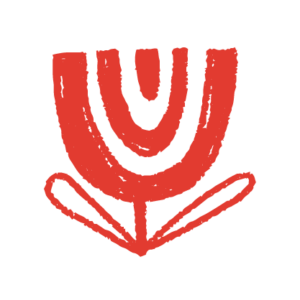

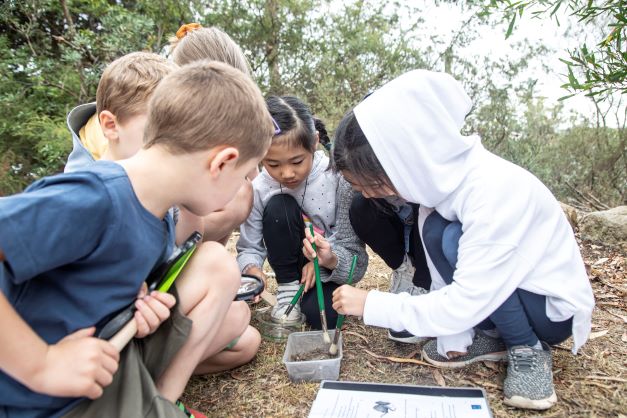
Useful links and resources
Below are useful links to help you grow your Junior Landcare group and plan activities/projects throughout the year.
- Junior Landcare Learning Centre
Developed by educators, this online platform features over 80 learning activities to build knowledge and deepen connections to food production, biodiversity, waste management and First Nations perspectives. Each learning activity comes with step-by-step instructions, activity sheets and videos that explain why the learning activity is important: www.juniorlandcare.org.au/learningcentre
- Environmental Events Calendar
Don’t miss an environmental date with the Junior Landcare events calendar designed to help you plan community events or inspire activities in your group related to important environmental days: www.juniorlandcare.org.au/events
- Junior Landcare YouTube Channel
Watch Costa and the Junior Landcare team for tips, demonstrations and inspiration related to the Junior Landcare Learning Centre activities:
www.youtube.com/@juniorlandcare
- Revegetation Project Planning Guide and Checklist
From plant selection to site preparation, budget range to permit/approval considerations, download this handy resource provide tips, ideas and resources to consider when planning a successful project. Download the checklist here.
- Learning Centre Educator Hub
A place for educators to connect, share experiences and obtain more information about getting the most out of the Junior Landcare Learning Centre: www.juniorlandcare.org.au/educator-hub
- Youth Engagement Community of Practice –Landcarer
Share feedback, questions and ideas with other educators and landcare facilitators and coordinators through the Landcarer website: www.landcarer.com.au
- Do Stuff That Matters Journal
Developed in partnership with Intrepid Landcare, the Do Stuff That Matters Journal provides young people with information and tips to help them turn their concerns, passions and ideas into action for the environment. Download a copy here: www.landcareaustralia.org.au/youthprogrm
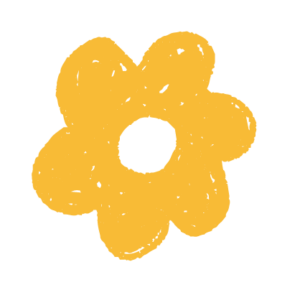
Special thanks to Vanessa Anderson, Western Landcare NSW and Chris Cobern, Upper Goulburn Landcare Network for their contributions to this resource.